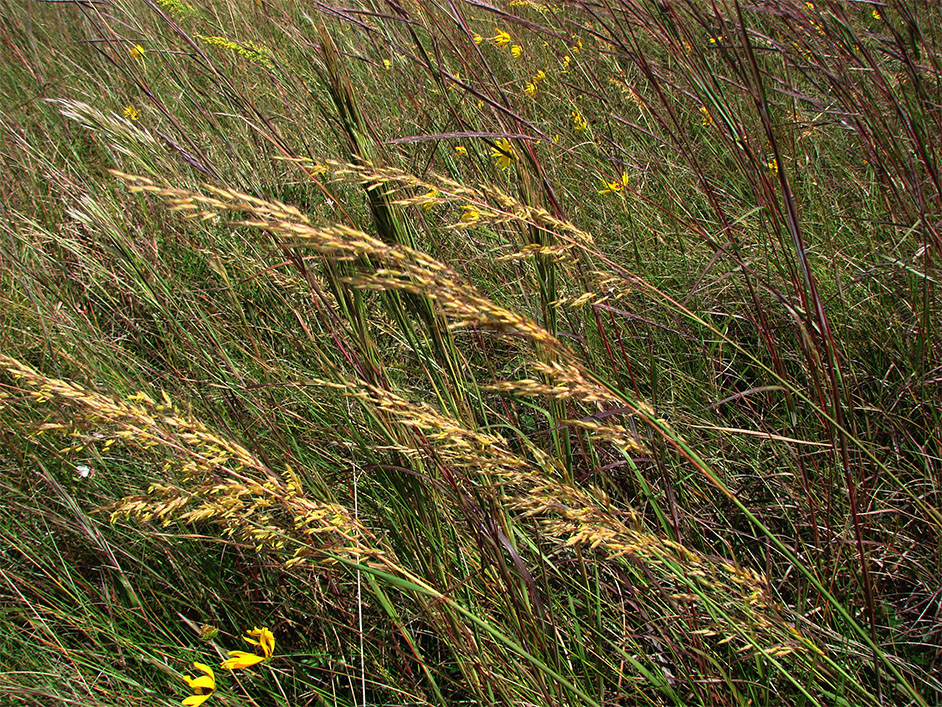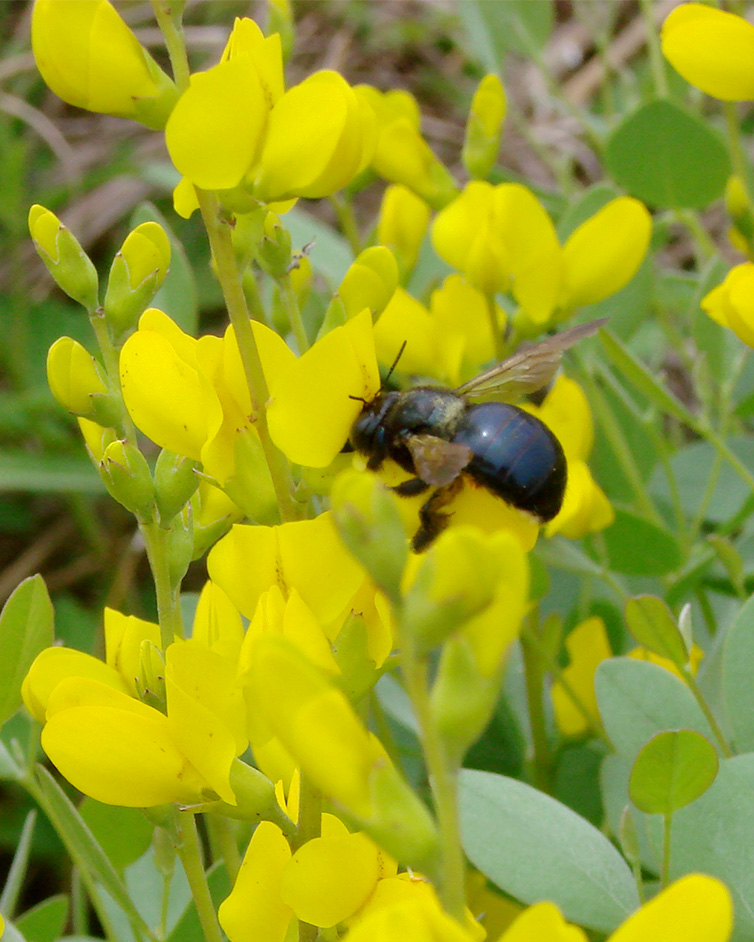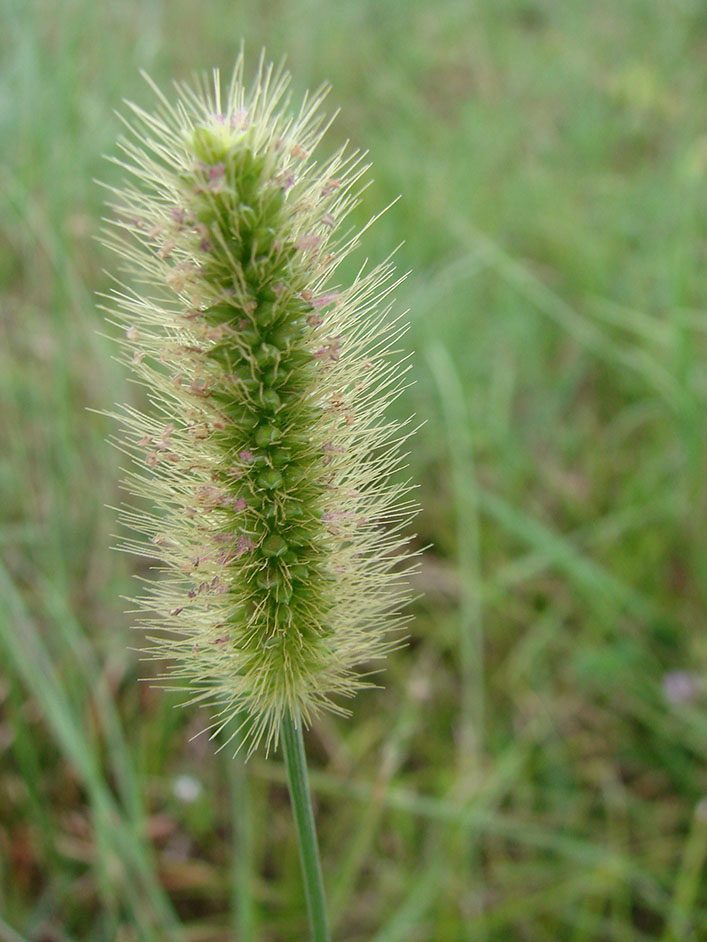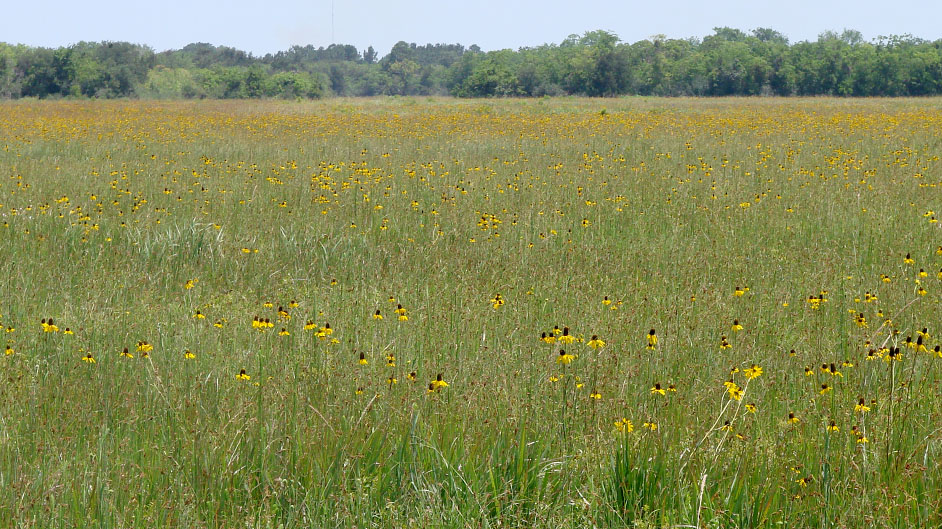
Big Bluestem (Andropogon gerardii).
While all coastal prairies, and prairies in general, provide significant benefits to people and wildlife, the coastal prairie at the University of Houston Coastal Center has particular merit because it provides a “gold standard” by which other coastal prairie restorations can be measured.
At the heart of the 925-acre UH Coastal Center lies the Aumann Prairie, approximately 100 acres in size, a link to the historic range of the Gulf Coast coastal prairie. Because the Aumann Prairie has never been plowed and because of its high plant species biodiversity, it represents the goal that prairie restoration efforts are working to achieve.
All healthy Coastal Prairies are home to deep-rooted coastal prairie grasses. These deep roots open conduits that allow water to percolate into the soil – much deeper than the common shallow-rooted turf grasses. The coastal prairie root systems that allow greater water infiltration absorb and store rainfall and slow the overland water flow into streams during storms. This helps reduce flooding risk in urban watersheds.

Because of their deep root systems, native coastal prairie grasses provide superior erosion control compared to non-native turf grasses commonly found in urban areas, such as Bermuda grass and St. Augustine grass. By reducing soil erosion due to runoff, the amount of particulates and pollutants deposited into receiving streams and aquatic systems is reduced, helping to protect water quality for people and wildlife.
Coastal prairies act as carbon sinks, absorbing carbon dioxide during photosynthesis and storing converted carbon in the root systems and in the soil as soil organic carbon. Unlike forests, which store a great percentage of carbon in above-ground trunks and branches, prairie plants store most of their converted carbon below the ground. Consequently, there is less release of carbon back into the atmosphere when there is a prairie fire versus a forest fire or when a prairie plant decomposes versus the decomposition of a tree.

Biodiversity of healthy coastal prairie supports healthy wildlife populations of resident and migratory birds, small mammals, and insects. Notably, the diversity of flowering forbs and grasses benefit pollinator populations by providing shelter, pollen, and nectar. Most agricultural food crops require pollination, so human food production is in turn dependent upon pollinators.

Healthy coastal prairies act as seed sources for future prairie restorations. As we become more aware of the benefits that coastal prairies provide to people and wildlife, we recognize opportunities where coastal prairie restoration could be an environmental enhancement or a solution. The critical element in coastal prairie restoration is the availability of appropriate seed. As we protect remaining coastal prairie and restore coastal prairie, they become natural resources of seed for expanding the ecosystem.
Coastal prairies’ ecosystems evolved with fire and grazing animals. Prairie plants are better adapted to survive periodic drought, fire, and flood. That means that when challenging environmental conditions occur, the coastal prairie plants are better able to recover so that the ecosystem advantages of flood protection, erosion control, and pollinator and wildlife benefits remain intact.

